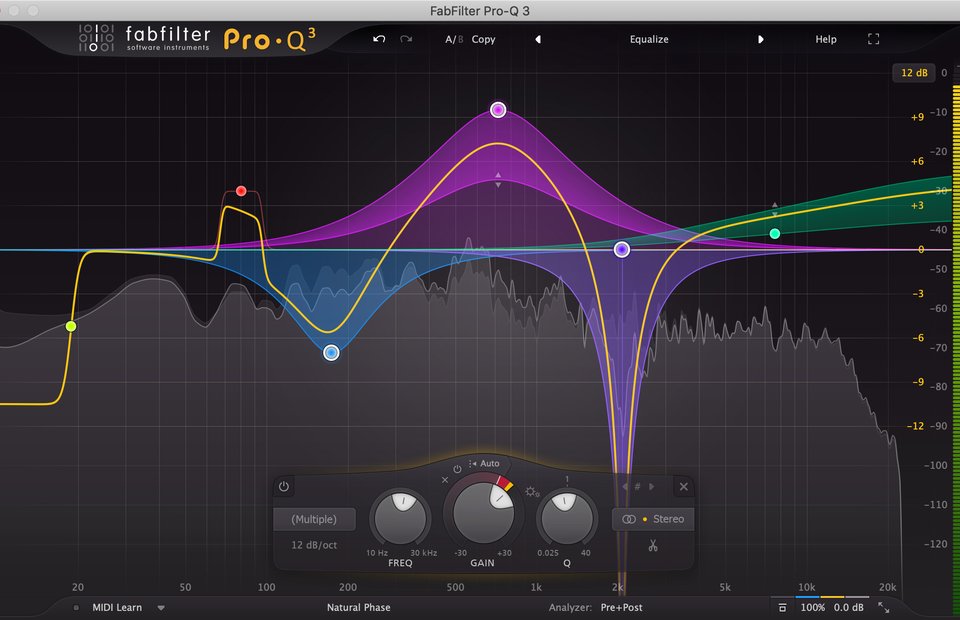There are many ways to categorize the sounds which make up our audible frequency spectrum (20Hz-20kHz). You have probably encountered treble, bass and maybe even midrange EQ controls on consumer electronics. In professional audio, these ranges often get subdivided even further. In this article we divide the audible frequency range into 9 frequency ranges in order to discuss how each of them can be considered in the context of a mix.
Low end
20-50 Hz
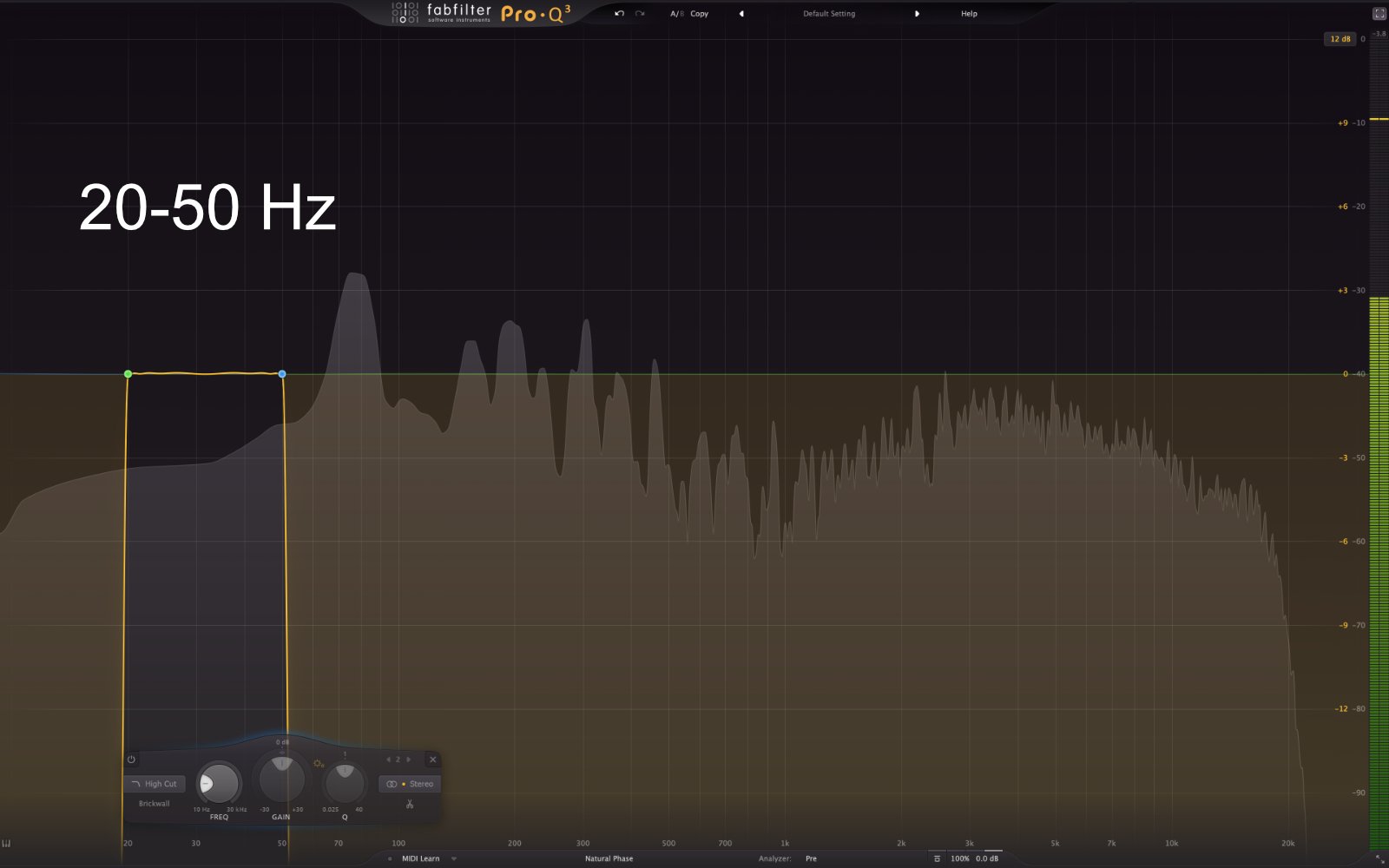
This area is more felt than heard. Although in some styles of music you still want this area to be represented in your mix, you’re more likely to cut frequencies in this area than boost them. Due to the effects of masking, having too much energy in this area can easily 'eat up' space in your mix. This frequency region can have a lot of impact on the overall balance of your mix if done wrong.
Accurately reproducing frequencies in this range can be challenging for two reasons:
- Many speakers, even those commonly used in mixing, won’t even reproduce energy in this region.
- These frequencies have very long wavelengths and thus are difficult to control acoustically. You’ll have to consider whether they are being represented accurately in your listening environment, especially if it is a small room.
50-125 Hz
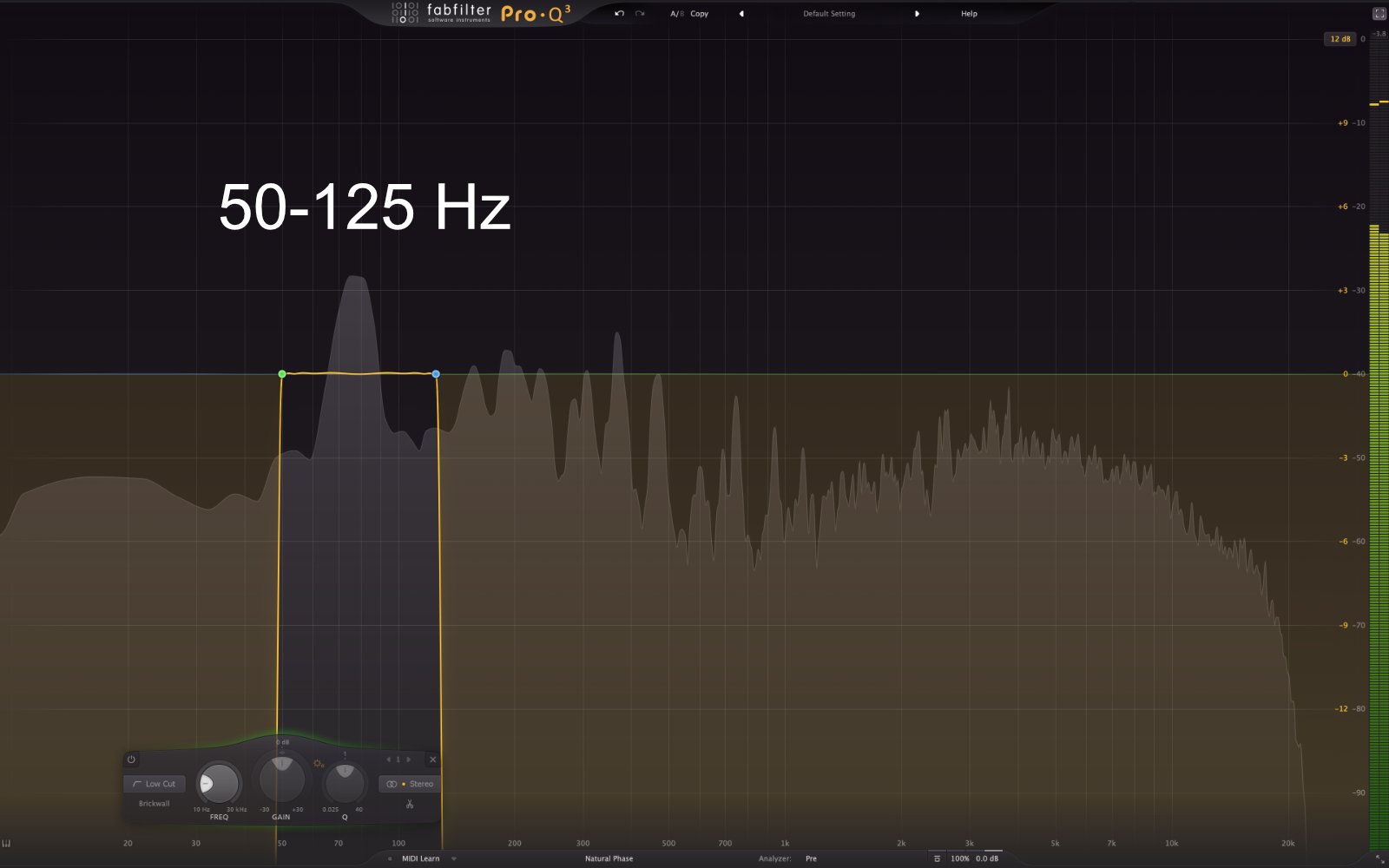
Generally, the first fundamentals of the bass region are generated in this area, e.g an open A string on a bass guitar has a fundamental frequency of 55 Hz. Kick drums often also have their fundamental frequency in this range. Due to frequency masking it is very easy for the kick to obscure the sound of the bass guitar and vice versa. Therefore, the relationship between the kick and bass is often determined here. For a specific video tutorial about this, please check out Dan Worrall’s; "FabFilter Pro-Q - EQ tips & tricks".
Although these frequencies are still quite low they will play a pretty important role in your mix. These frequencies can make a mix sound big and thick, however, too much energy in this area can feel overpowering and messy. Like the previous range, accurate translation of these frequencies over various playback systems can be a challenge and is something most beginner engineers have a hard time getting right with their first mixes. Knowing how your playback/mixing setup translates this area is crucial for both mixing and mastering.
To help with managing low end, try to check your mixes on headphones and familiarize yourself with multiple playback systems in different acoustic environments. Treat this frequency range with caution and awareness!
Low mid range
125 - 350 Hz
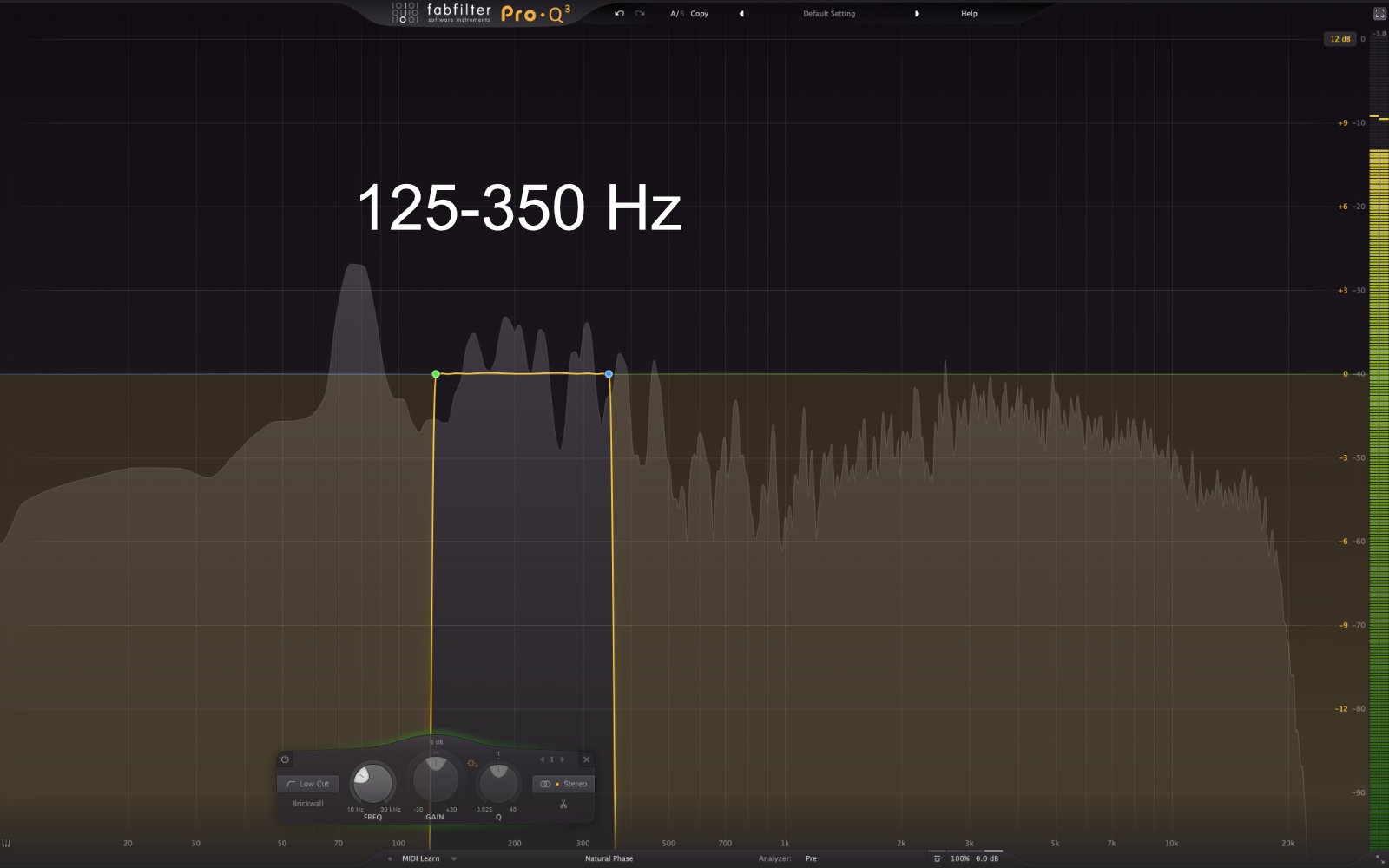
These frequencies are punchy in nature. They can be more easily recreated on small playback devices (like common bookshelf speakers with 6 inch drivers). The first overtones of the bass and kick occur here, coexisting with the fundamental frequencies of guitar and lower tuned snare drums. In this range it is also common to encounter some resonant frequencies (especially with drums) which may need to be managed.
The stylistic relationship between the kick and bass is generally decided in this area as well. Since the bottom end of the guitar occupies this range as well it can lead to potential problems with overlapping bass frequencies. Complementary boosts/cuts and careful stereo placement allow you to easily create seperation between instruments occupying this range.
The lower frequencies in this range are punchy in nature. Sounds in the upper part of this range are often described as; woofy, thick, fat, dark, muddy and so on. Things can get crowded in this area as the frequencies of instruments start to overlap (e.g; Male vocals, snare drum fundamentals, keyboards, guitars).
This can be a problematic frequency range and is often hard to get right. If your mix is sounding muddy overall, you may need to manage how instruments are coexisting in this area.
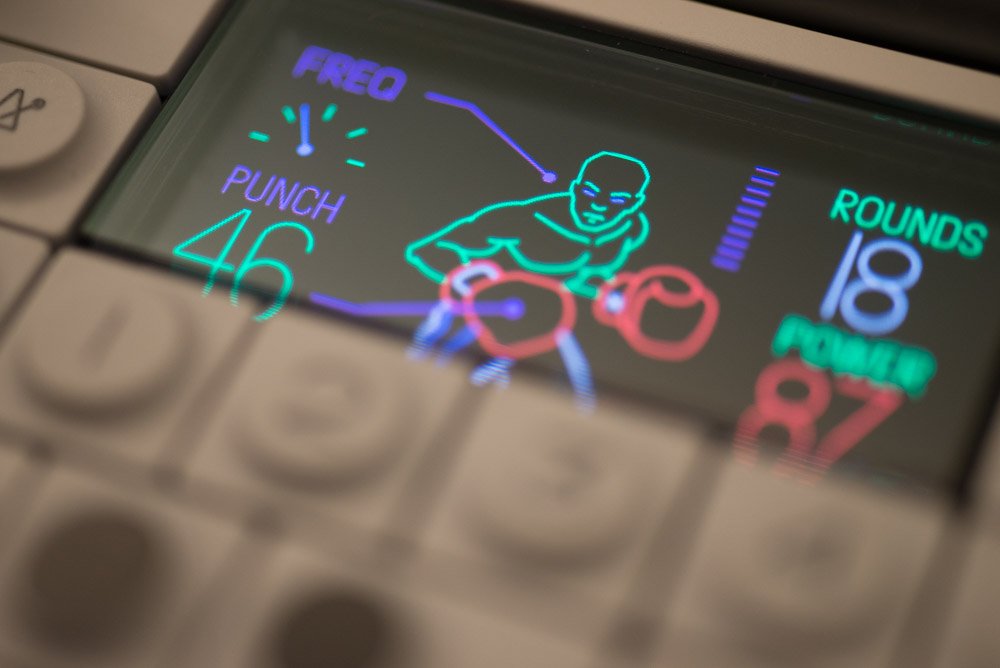
350 Hz - 500 kHz
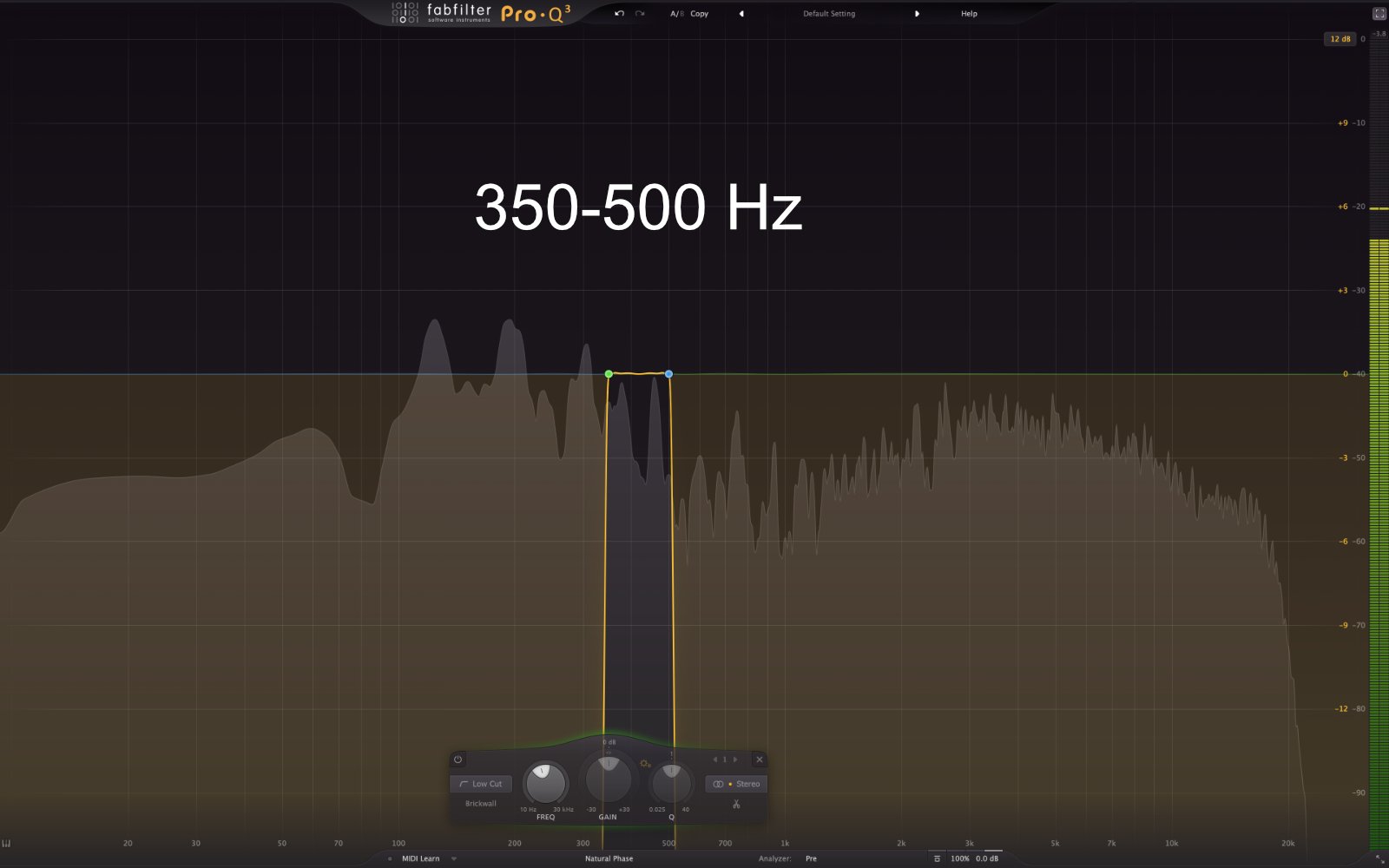
Much like the previous range, this area features a lot of overlap. Given the healthy representation of instruments who can play in this range, it is no surprise that A440 (A4 - 440Hz) is used as a tuning reference note across the orchestra.
This area is important for defining the character of many midrange instruments. For instance, the early harmonics for lower notes on guitar can live in this range, helping to add warmth/support to the sound. Much like the previous range, it is common to encounter some resonant frequencies which may need to be managed.
If overemphasized, this range can have a boxy quality to it but don't let that scare you away - these are critical frequencies in a mix.
Midrange
500 Hz - 1.5 kHz
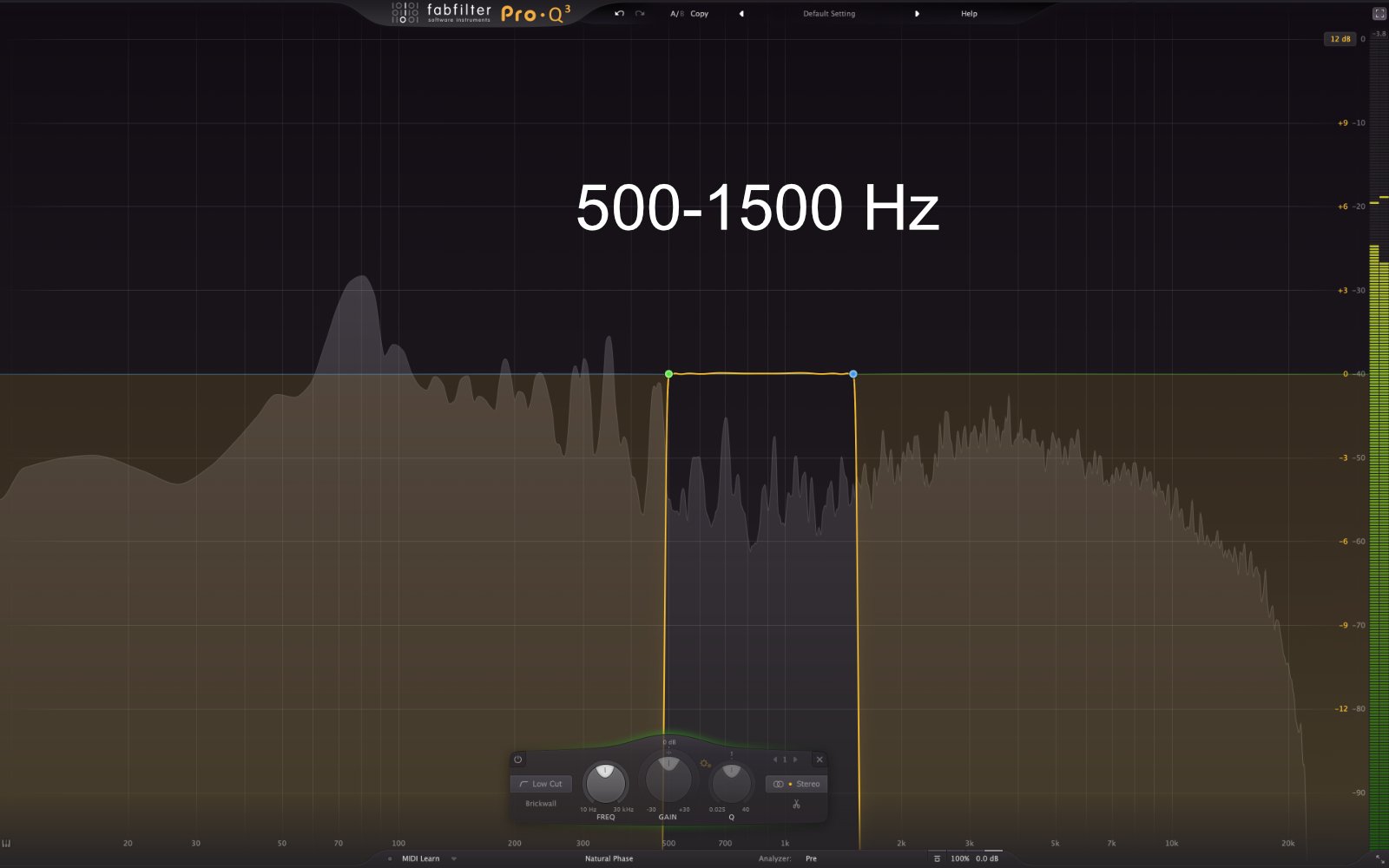
This is the heart of the midrange. It is an important area to manage as many instruments overlap in this range and you may need to use complimentary EQ to make the spectral pieces fit together. For many foundational instruments (guitars, bass, keyboards, kick, snare) the fundamental frequencies will likely fall below this range but the overtones which largely define the aesthetic character of those instruments can be shaped in this region. For instruments with a higher fundamental frequency such as a vocal, the more prominent low order harmonics may cause issues with resonances in this range that need to be managed.
This is a very important frequency range as it will be reproduced fairly effectively on just about any consumer playback system, even those which are inherently bandwidth limited (such as phone and laptop speakers). For this reason, it is often desirable to have spectral representation from the most important musical elements in this range. In some cases, our brain will even fill in a missing fundamental frequency (absent in a small speaker) if there is enough harmonic information to inform us of its presence.
Upper mid range
1.5 kHz - 4 kHz
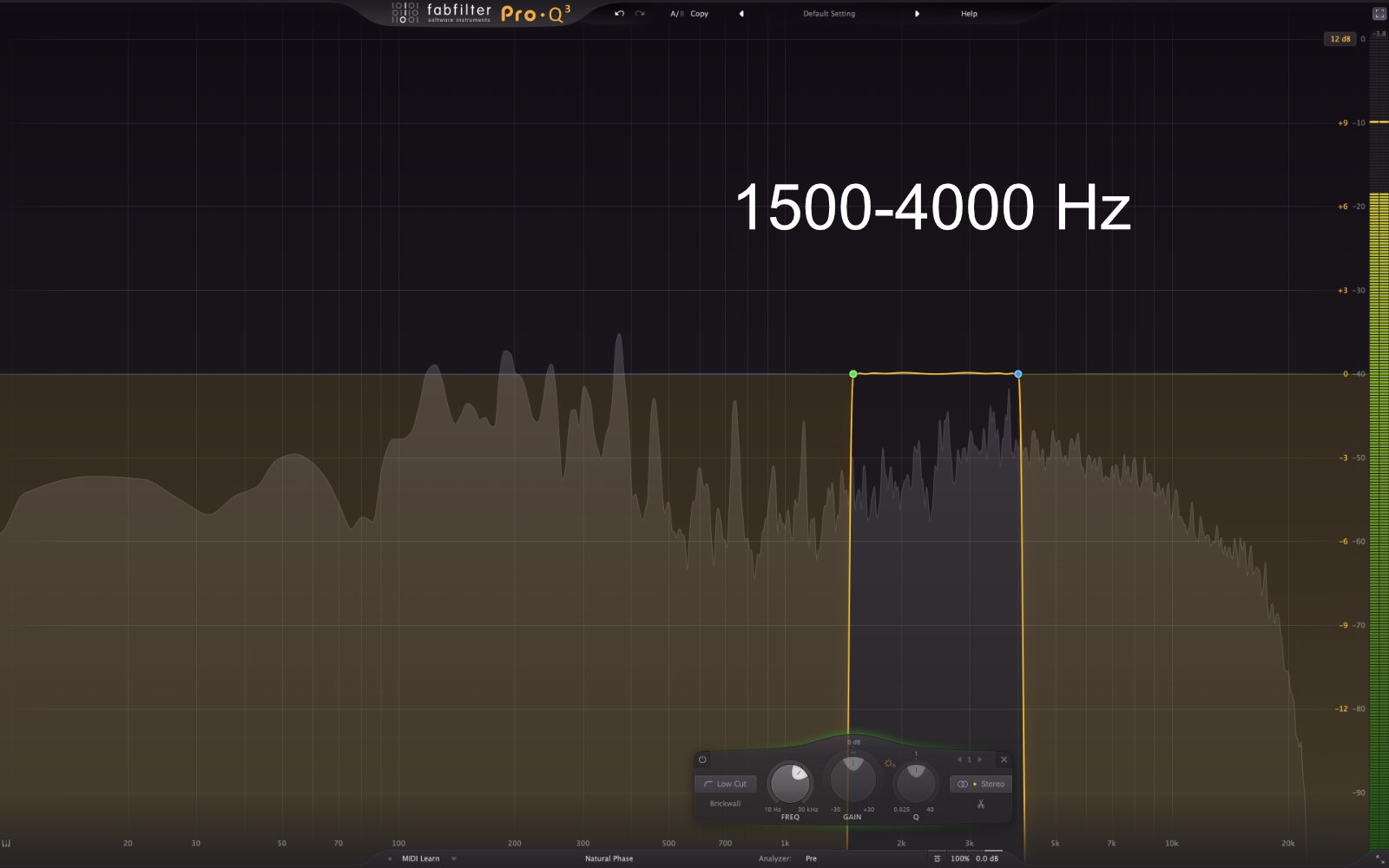
This is an exceptionally present range as our ears are most sensitive to these frequencies, in part due to the resonance of our auditory canal. This frequency range can be particularly useful to bring out presence and intelligibility in a vocal or snare drum. However, a mix can also sound harsh if there’s an excessive amount of frequency content here.
High end
4 kHz - 6 kHz
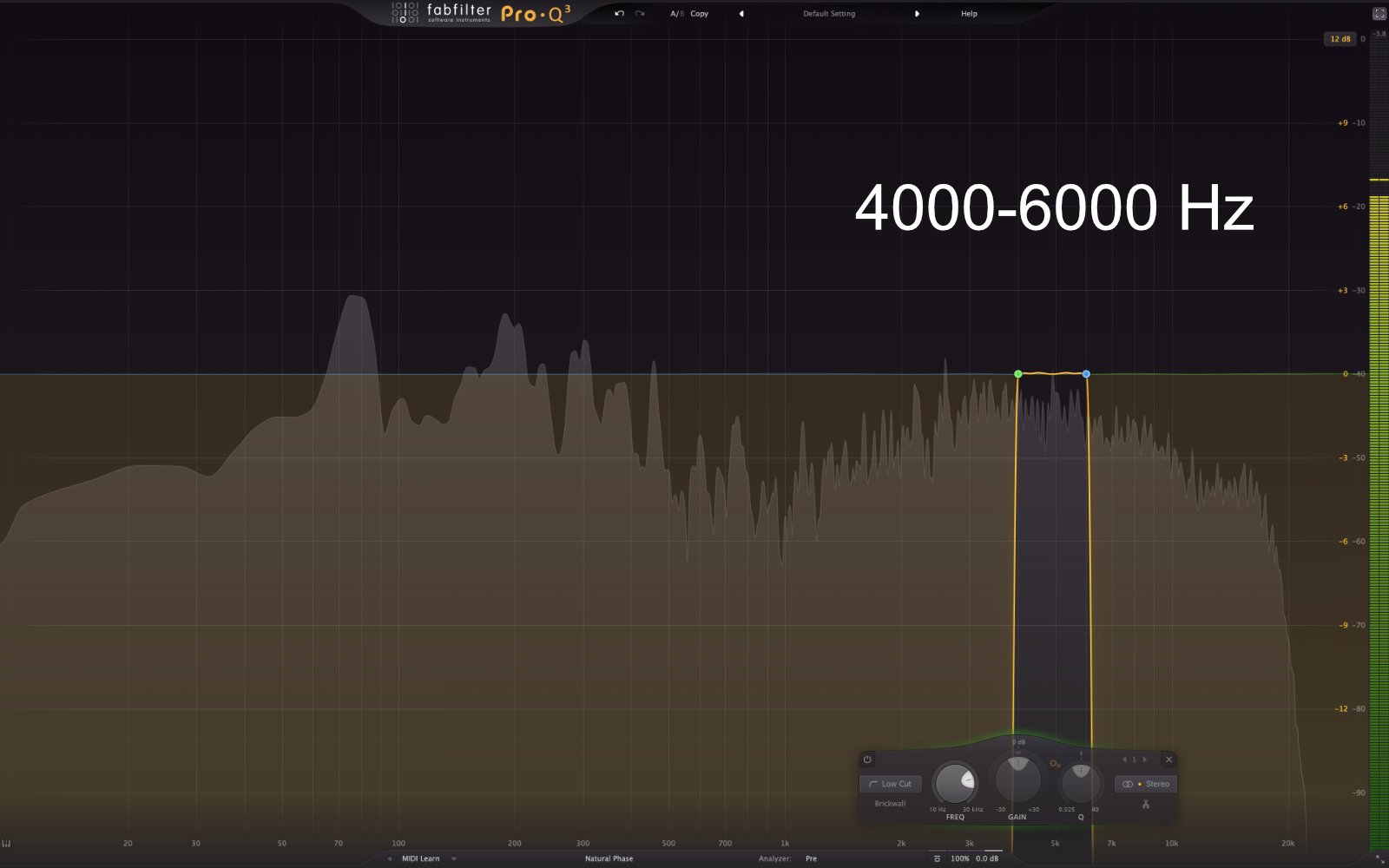
From here and above, we are now leaving the fundamental frequencies of the piano and orchestra behind and moving into purely overtone/harmonic territory. This area works much like the area from 1.5-4 kHz, and can be useful for adding presence to a track.
These frequencies can add a lot more bite and aggressiveness to guitars in particular. Boosting 4 kHz often helps guitars cut through, bringing them to the forefront of a mix. On most guitar amps the presence control will boost or cut frequencies in this region. For distorted guitars in particular, there’s a lot of harmonic content in this area which can help you to bring out the character of a particular guitar.
Pro-Q 3 comes with a couple of presets that are generally a good starting point for the most commonly used instruments. Use them as a guideline, not as a rule. You will find that your EQ decisions vary with the type of role you want the instrument to play in your mix. There are no rules, merely choices.
6 kHz - 9 kHz
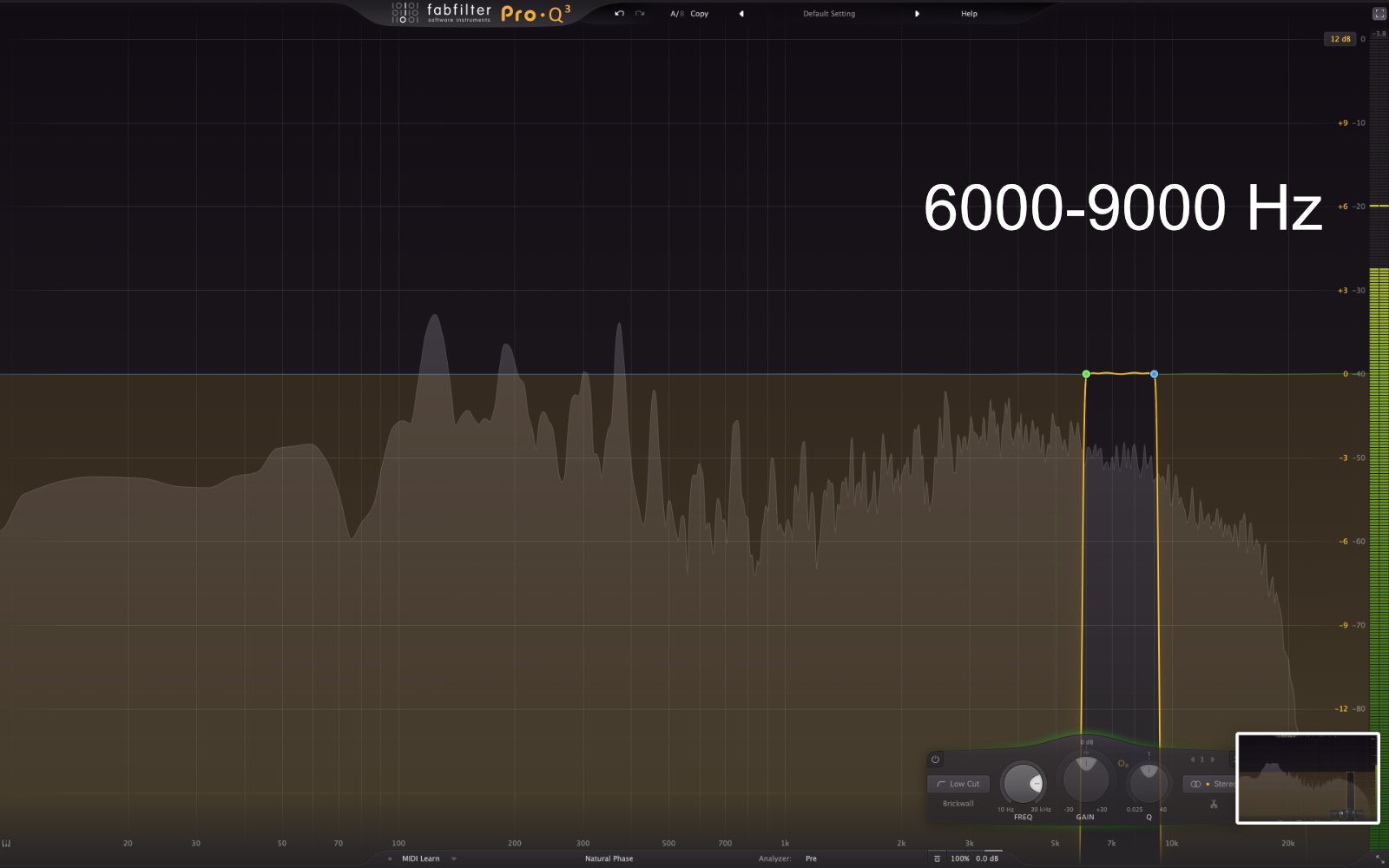
This range is where the 's' and other sibilant sounds live. It is important for intelligibility, but can be piercing if overemphasized. A close mic'ed vocal can produce an aggressive sound due to the energy in this range, which may be desirable depending on the style of music. For instance, rap vocals can sound great when you push this area a bit. For acoustic instruments especially, there can be a lot of detail in this area (bow noise, key-clicks, pick noise, etc.). You can make a player appear closer on the soundstage by emphasizing energy in this range while cutting frequencies here has the opposite effect and will make something appear further away.
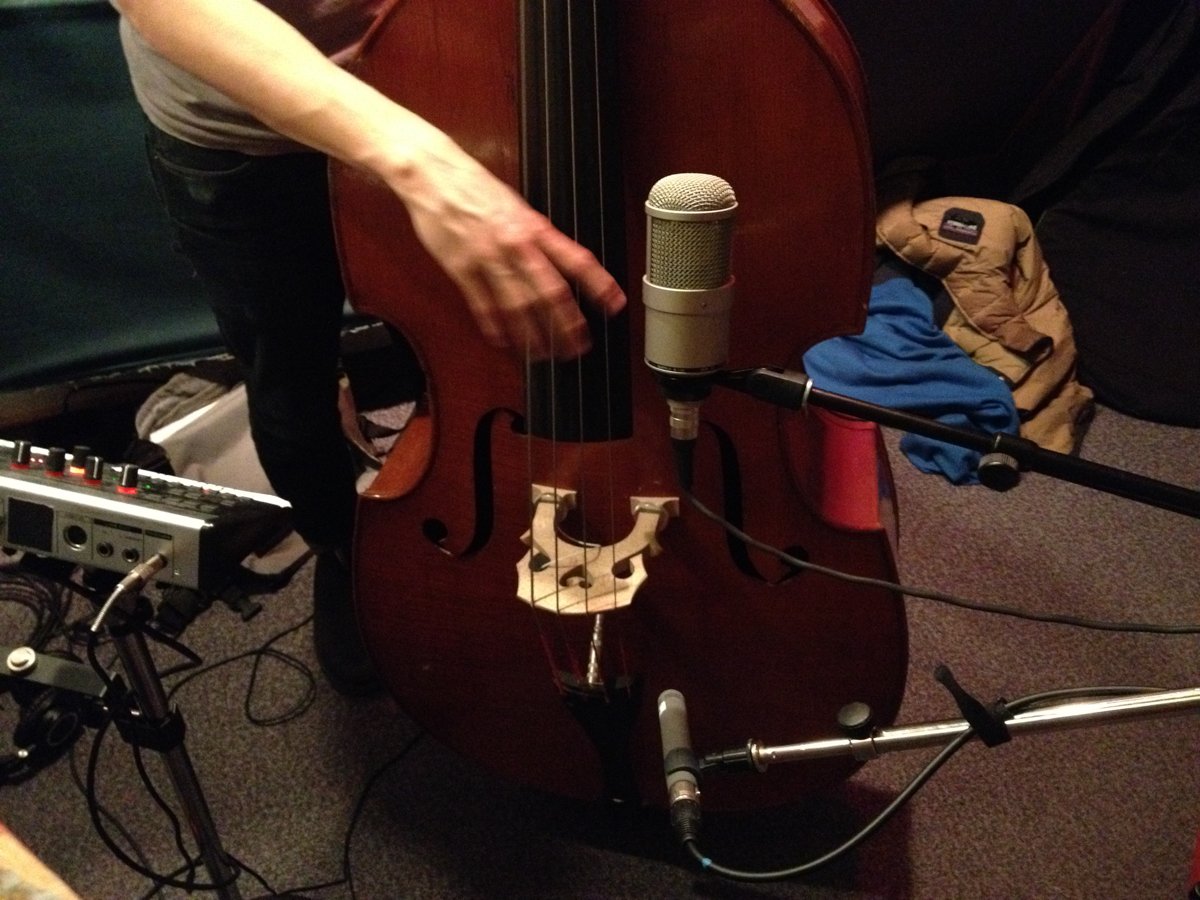
9 kHz - 16 kHz (and beyond)
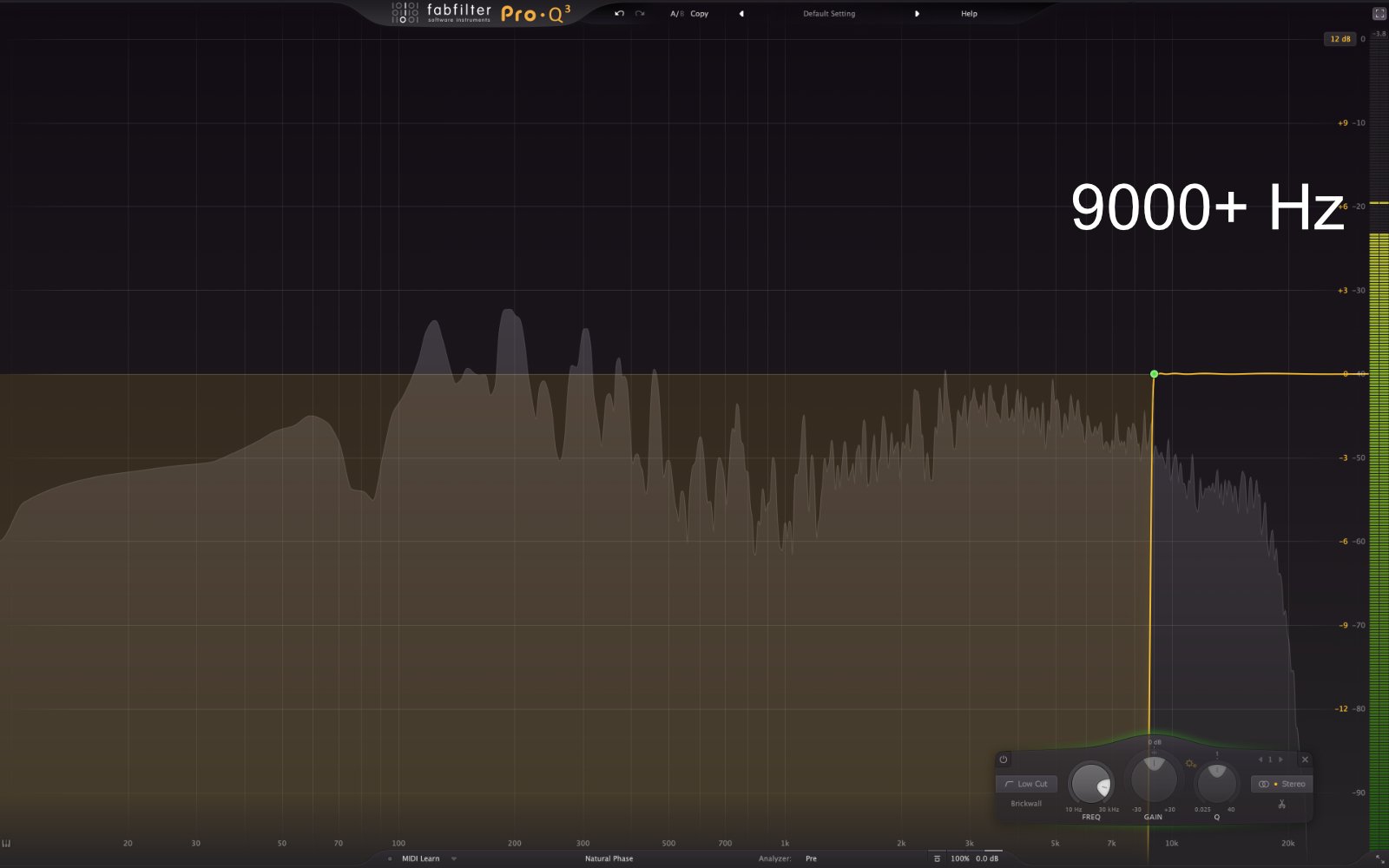
This is the highest part of the spectrum with our ears being less and less sensitive towards the top of this range (a symptom which becomes more pronounced as we age). Even though this is the upper limit of our hearing range, musical instruments still produce sound at these frequencies (and beyond).
This range is often referred to as the air and/or sparkle band and boosting energy here can open up a mix. The brilliance and clarity of a sound can be accentuated by boosting a couple of dBs in this area, however too much energy can be fatiguing. Vocal sibilance also extends up to this range.
Making EQ gestures with centre frequencies above this range may still affect audible frequencies in this range, depending on their bandwidth. There can also be aliasing ramifications for content in this area. See Dan Worrall’s sample rate video for more info about this:

